Microsoft Azure Administrator AZ104 Overview
AZ-104 Microsoft Azure Administrator Course Outline
Module 1: Configure Azure Active Directory
- Introduction
- Describe Azure Active Directory Benefits and Features
- Describe Azure Active Directory Concepts
- Compare Active Directory Domain Services to Azure Active Directory
- Select Azure Active Directory Editions
- Implement Azure Active Directory Join
- Implement Azure Active Directory Self-Service Password Reset
Module 2: Configure user and group accounts
- Introduction
- Create User Accounts
- Manage User Accounts
- Create Bulk User Accounts
- Create Group Accounts
- Create Administrative Units
- Interactive Lab Simulation
Module 3: Configure Subscriptions
- Introduction
- Identify Azure Regions
- Implement Azure Subscriptions
- Obtain an Azure Subscription
- Identify Azure Subscription Usage
- Implement Microsoft Cost Management
- Apply Resource Tagging
- Apply Cost Savings
Module 4: Configure Azure Policy
- Introduction
- Create Management Groups
- Implement Azure Policies
- Create Azure Policies
- Create Policy Definitions
- Create an Initiative Definition
- Scope the Initiative Definition
- Determine Compliance
- Interactive Lab Simulation
Module 5: Configure Role-Based Access Control
- Introduction
- Implement Role-Based Access Control
- Create a Role Definition
- Create a Role Assignment
- Compare Azure Roles to Azure Active Directory Roles
- Apply Role-Based Access Control
- Review Fundamental Azure RBAC Roles
- Interactive Lab Simulation
Module 6: Configure Azure Resources with Tools
- Introduction
- Use the Azure Portal
- Use Azure Cloud Shell
- Use Azure PowerShell
- Interactive Lab Simulation (Azure PowerShell)
- Use Azure CLI
- Interactive Lab Simulation (Azure CLI)
Module 7: Use Azure Resource Manager
- Introduction
- Review Azure Resource Manager Benefits
- Review Azure Resource Terminology
- Create Resource Groups
- Create Azure Resource Manager Locks
- Reorganize Azure Resources
- Remove Resources and Resource Groups
- Determine Resource Limits
Module 8: Configure Resources with Azure Resource Manager Templates
- Introduction
- Review Azure Resource Manager Template Advantages
- Explore the Azure Resource Manager Template Schema
- Explore the Azure Resource Manager Template Parameters
- Consider Bicep Templates
- Review QuickStart Templates
- Interactive Lab Simulation – Templates
Module 9: Configure Virtual Networks
- Introduction
- Plan Virtual Networks
- Create Subnets
- Create Virtual Networks
- Plan IP Addressing
- Create Public IP Addressing
- Associate Public IP Addresses
- Allocate or Assign Private IP Addresses
- Interactive lab Simulation
Module 10: Configure Network Security Groups
- Introduction
- Implement Network Security Groups
- Determine Network Security Group Rules
- Determine Network Security Group Effective Rules
- Create Network Security Group Rules
- Implement Application Security Groups
- Interactive Lab Simulation
Module 11: Configure Azure DNS
- Introduction
- Identify Domains and Custom Domains
- Verify Custom Domain Names
- Create Azure DNS Zones
- Delegate DNS Domains
- Add DNS Record Sets
- Plan for Azure Private DNS Zones
- Review Azure Private DNS Zone Scenarios
- Interactive Lab Simulation
Module 12: Configure Azure Virtual Network Peering
- Introduction
- Determine Azure Virtual Network Peering Uses
- Determine Gateway Transit and Connectivity
- Create Virtual Network Peering
- Extend Peering with User-Defined Routes and Service Chaining
- Interactive Lab Simulation
Module 13: Configure Network Routing and Endpoints
- Introduction
- Review System Routes
- Identify User-Defined Routes
- Determine Service Endpoint Uses
- Determine Service Endpoint Services
- Identify Private Link Uses
- Interactive Lab Simulation
Module 14: Configure Azure Load Balancer
- Introduction
- Determine Azure Load Balancer Uses
- Implement a Public Load Balancer
- Implement an Internal Load Balancer
- Determine Load Balancer Skus
- Create Back-End Pools
- Create Health Probes
- Create Load Balancer Rules
- Interactive Lab Simulation
Module 15: Configure Azure Application Gateway
- Introduction
- Implement Azure Application Gateway
- Determine Azure Application Gateway Routing
- Configure Azure Application Gateway Components
Module 16: Configure Storage Accounts
- Introduction
- Implement Azure Storage
- Explore Azure Storage Services
- Determine Storage Account Types
- Determine Replication Strategies
- Access Storage
- Secure Storage Endpoints
Module 17: Configure Azure Blob Storage
- Introduction
- Implement Azure Blob Storage
- Create Blob Containers
- Assign Blob Access Tiers
- Add Blob Lifecycle Management Rules
- Determine Blob Object Replication
- Upload Blobs
Module 18: Configure Azure Storage Security
- Introduction
- Review Azure Storage Security Strategies
- Create Shared Access Signatures
- Identify URI and SAS Parameters
- Determine Azure Storage Encryption
- Create Customer-Managed Keys
- Apply Azure Storage Security best practices
- Interactive Lab Simulation
Module 19: Configure Azure Files and Azure File Sync
- Introduction
- Compare Storage for File Shares and Blob Data
- Manage Azure Files Shares
- Create File Share Snapshots
- Implement Azure File Sync
- Identify Azure File Sync Components
- Deploy Azure File Sync
Module 20: Configure Azure Storage with Tools
- Introduction
- Use Azure Storage Explorer
- Use the Azure Import/Export Service
- Use the WAImportExport Tool
- Use the AzCopy Tool
Module 21: Configure Virtual Machines
- Introduction
- Review Cloud Services Responsibilities
- Plan virtual Machines
- Determine Virtual Machine Sizing
- Determine Virtual Machine Storage
- Create Virtual Machines in the Azure Portal
- Connect to Virtual Machines
- Interactive Lab Simulation
Module 22: Configure Virtual Machine Availability
- Introduction
- Plan for Maintenance and Downtime
- Create Availability Sets
- Review Update Domains and Fault Domains
- Review Availability Zones
- Compare Vertical and Horizontal Scaling
- Implement Azure Virtual Machine Scale Sets
- Create Virtual Machine Scale Sets
- Implement Autoscale
- Configure Autoscale
- Interactive Lab Simulation
Module 23: Configure Azure App Service plans
- Introduction
- Implement Azure App Service Plans
- Determine Azure App Service Plan Pricing
- Scale up and Scale out Azure App Service
- Configure Azure App Service Autoscale
Module 24: Configure Azure App Service
- Introduction
- Implement Azure App Service
- Create an App with App Service
- Explore Continuous Integration and Deployment
- Create Deployment Slots
- Add Deployment Slots
- Secure your App Service App
- Create Custom Domain Names
- Backup and Restore your App Service App
- Use Azure Application Insights
- Interactive Lab Simulation
Module 25: Configure Azure Container Instances
- Introduction
- Compare Containers to Virtual Machines
- Review Azure Container Instances
- Implement Container Groups
- Review the Docker Platform
- Interactive Lab Simulation
Module 26: Configure File and Folder Backups
- Introduction
- Describe Azure Backup Benefits
- Implement Backup Center for Azure Backup
- Configure Azure Recovery Services Vault Backup Options
- Use the Microsoft Azure Recovery Services (MARS) Agent
- Configure On-Premises File and Folder Backups
- Interactive Lab Simulation
Module 27: Configure virtual machine backups
- Introduction
- Explore Options to Protect Virtual Machine Data
- Create Virtual Machine Snapshots in Azure Backup
- Set Up Azure Recovery Services Vault Backup Options
- Back Up your Virtual Machines
- Restore your Virtual Machines
- Implement System Center DPM and Azure Backup Server
- Compare the MARS Agent and Azure Backup Server
- Implement Soft Delete for your Virtual Machines
Module 28: Introduction
- Describe Azure Monitor Key Capabilities
- Describe Azure Monitor Components
- Define Metrics and Logs
- Identify Monitoring Data and Tiers
- Describe Activity Log Events
- Query the Activity Log
- Interactive Lab Simulation
Module 29: Configure Azure Alerts
- Introduction
- Describe Azure Monitor Alerts
- Manage Azure Monitor Alerts
- Create Alert Rules
- Create Action Groups
Module 30: Configure Log Analytics
- Introduction
- Determine Log Analytics Uses
- Create a Log Analytics Workspace
- Create Kusto (KQL) Queries
- Structure Log Analytics Queries
Module 31: Configure Network Watcher
- Introduction
- Describe Azure Network Watcher Features
- Review IP Flow Verify Diagnostics
- Review Next Hop Diagnostics
- Visualize the Network Topology


Who should attend this Microsoft Azure Administrator AZ-104 Course?
The AZ-104 Microsoft Azure Administrator Course in the United States, aims to provide professionals with the skill set required to manage and maintain Azure resources and services. This course can be beneficial for a wide range of professionals, including:
- IT Professionals
- System Administrators
- Azure Cloud Engineers
- Network Administrators
- Infrastructure Engineers
- Cloud Solutions Architects
- Cloud Administrators
Prerequisites of the AZ-104 Microsoft Azure Administrator Course
For attending this AZ-104 Microsoft Azure Administrator Course, the required prerequisites are a basic understanding of the core Azure architecture and services, prior knowledge of Azure management and governance and familiarity with the basic cloud concepts.
AZ-104 Microsoft Azure Administrator Course Overview
The AZ-104 Microsoft Azure Administrator Course in the United States is a vital component of Microsoft Azure Training. Cloud computing has become the backbone of countless industries. This course introduces delegates to Microsoft Azure, one of the leading cloud platforms, highlighting its immense relevance in the modern IT ecosystem.
Proficiency in Microsoft Azure is crucial for IT Professionals, System Administrators, and cloud enthusiasts. In an era where organizations are rapidly transitioning to the cloud, mastering Azure ensures job readiness and career advancement. This course in the United States is essential for those aiming to excel in cloud-based roles and those seeking expertise in managing Azure environments.
The Knowledge Academy's 4-day AZ-104 Microsoft Azure Administrator Course in the United States offers a fast-track approach to mastering Azure. This course equips delegates with the knowledge and hands-on skills needed to manage Azure subscriptions effectively. Delegates will learn how to configure virtual networks, handle network traffic, implement storage solutions, create and scale virtual machines, deploy web apps and containers, ensure data backup and sharing, and monitor their Azure solutions.
Course Objectives:
- To efficiently manage Azure subscriptions and resources, optimizing cost and resource utilization
- To gain expertise in identity and access management, ensuring the security of Azure resources and data
- To learn how to administer Azure infrastructure components, including virtual machines, storage, and networking
- To master the configuration of virtual networks to enable secure and efficient communication between Azure and on-premises environments
- To acquire skills to implement various storage solutions in Azure, including blob storage, file storage, and managed disks
- To deploy and manage web apps, containers, and other Azure services, enabling scalable and reliable applications in the cloud
After completing the AZ-104 Microsoft Azure Administrator Course in the United States, delegates will possess a comprehensive understanding of Azure administration. They will be equipped to excel in roles related to cloud computing and Azure management, making them valuable assets to organizations navigating the digital transformation


What’s included in this AZ-104 Microsoft Azure Administrator Course?
- World-Class Training Sessions from Experienced Instructors
- AZ-104 Microsoft Azure Administrator Certificate
- Digital Delegate Pack


Why choose us
Ways to take this course
Experience live, interactive learning from home with The Knowledge Academy's Online Instructor-led Microsoft Azure Administrator AZ104. Engage directly with expert instructors, mirroring the classroom schedule for a comprehensive learning journey. Enjoy the convenience of virtual learning without compromising on the quality of interaction.
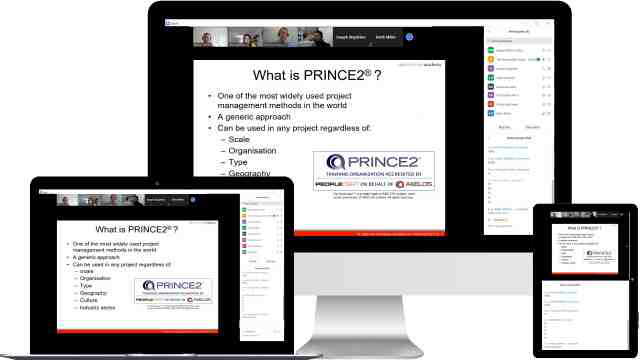
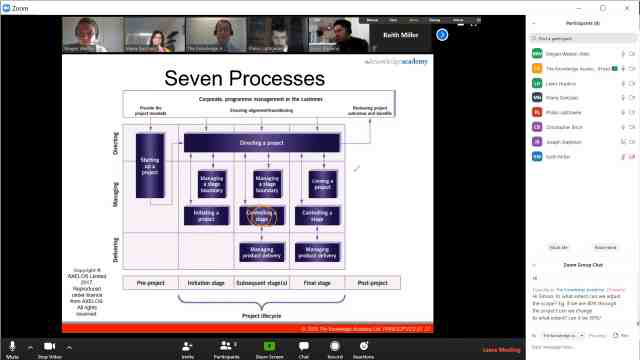
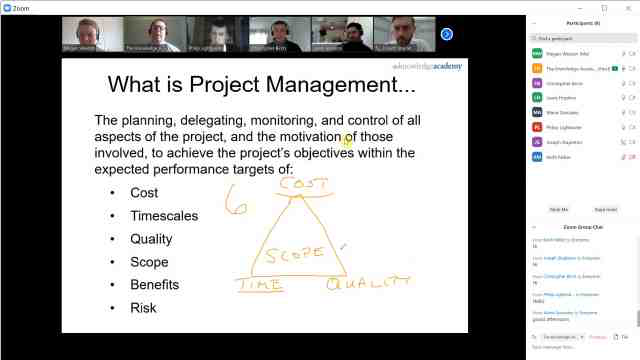
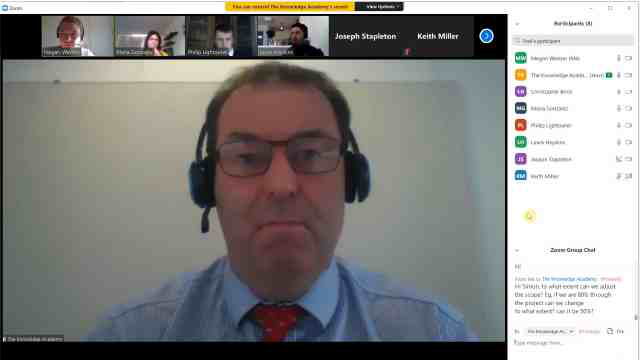
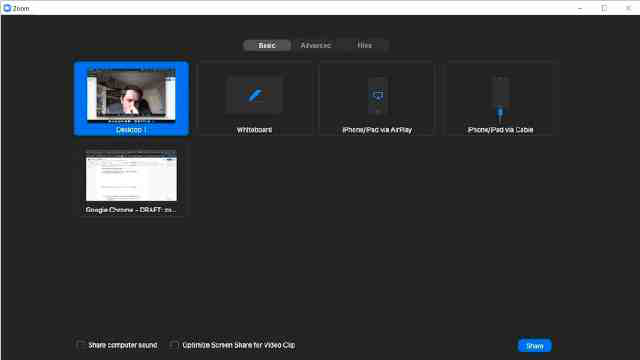
Unlock your potential with The Knowledge Academy's Microsoft Azure Administrator AZ104, accessible anytime, anywhere on any device. Enjoy 90 days of online course access, extendable upon request, and benefit from the support of our expert trainers. Elevate your skills at your own pace with our Online Self-paced sessions.
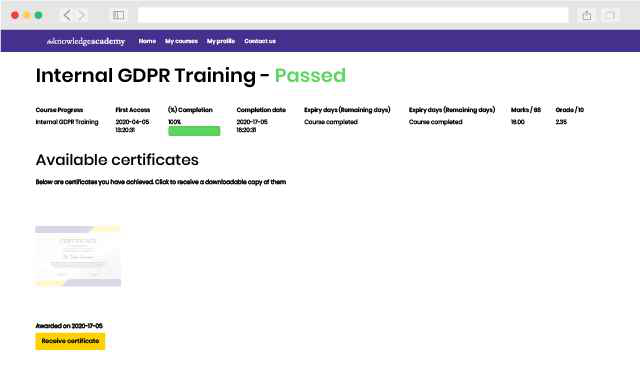
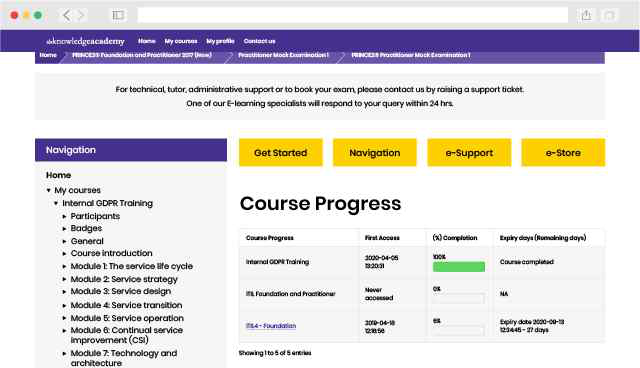
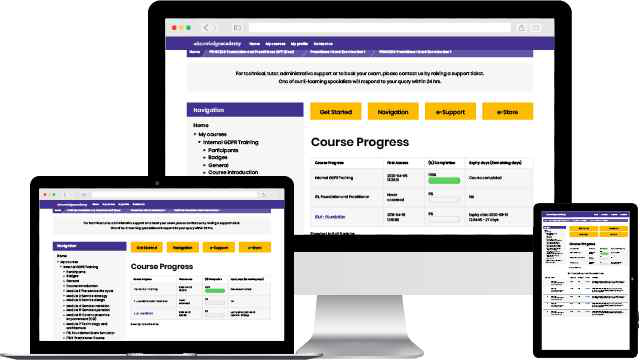
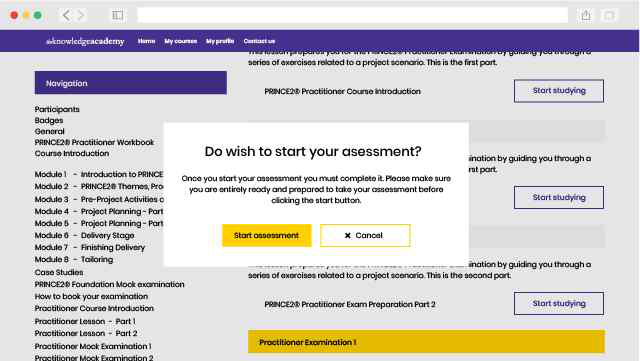
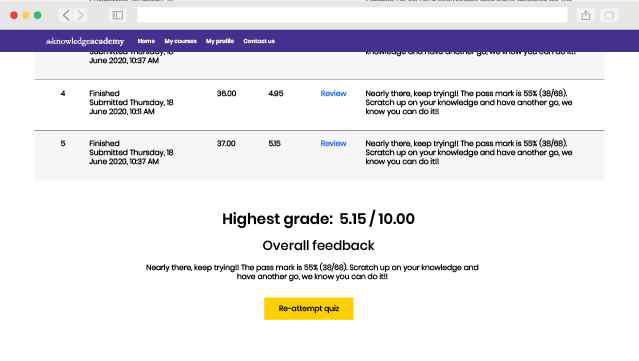
What our customers are saying
no comments
Roberto Agudelo
I liked Richard very much. He did an excellent job and was very patient with us.
Bam Peterson
Is so good
Camilo Andres Bermudez Polania
Microsoft Azure Administrator AZ104 FAQs

Why choose us

Best price in the industry
You won't find better value in the marketplace. If you do find a lower price, we will beat it.

Trusted & Approved
Microsoft Azure Training

Many delivery methods
Flexible delivery methods are available depending on your learning style.

High quality resources
Resources are included for a comprehensive learning experience.




"Really good course and well organised. Trainer was great with a sense of humour - his experience allowed a free flowing course, structured to help you gain as much information & relevant experience whilst helping prepare you for the exam"
Joshua Davies, Thames Water



Looking for more information on Microsoft Azure Certification?
Microsoft Azure Administrator AZ104 in United States
 Atlanta
Atlanta New York
New York Houston
Houston Dallas
Dallas Denver
Denver Seattle
Seattle Los Angeles
Los Angeles Chicago
Chicago San Francisco
San Francisco Philadelphia
Philadelphia San Diego
San Diego Phoenix
Phoenix Boston
Boston Austin
Austin Detroit
Detroit San Jose
San Jose Tampa
Tampa Colorado Springs
Colorado Springs Portland
Portland Sacramento
Sacramento Minneapolis
Minneapolis San Antonio
San Antonio Irvine
Irvine Las Vegas
Las Vegas Miami
Miami Bellevue
Bellevue Pittsburgh
Pittsburgh Baltimore
Baltimore Fairfax
Fairfax Orlando
Orlando Raleigh
Raleigh Salt Lake City
Salt Lake City Columbus
Columbus Oklahoma City
Oklahoma City Nashville
Nashville Charleston
Charleston Columbia
Columbia Cleveland
Cleveland Cincinnati
Cincinnati Memphis
Memphis Richmond
Richmond Virginia Beach
Virginia Beach Louisville
Louisville Fort Lauderdale
Fort Lauderdale Indianapolis
Indianapolis Des Moines
Des Moines Grand Rapids
Grand Rapids New Orleans
New Orleans Wichita
Wichita Charlotte
Charlotte Hartford
Hartford New Jersey
New Jersey Anchorage
Anchorage Omaha
Omaha Honolulu
Honolulu Albuquerque
Albuquerque Baton Rouge
Baton Rouge Iowa City
Iowa City Albany, NY
Albany, NY Boise
Boise Milwaukee
Milwaukee Tucson
Tucson Kansas City
Kansas City St Louis
St Louis Jacksonville
Jacksonville
 Back to course information
Back to course information
Microsoft Azure Administrator Certification
Save upto 40%Included courses:
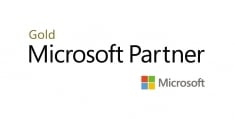

Total without package: $5090
Package price: $3095 (Save $1995)
Limited budget?
 If you miss out, enquire to get yourself on the waiting list for the next day!
If you miss out, enquire to get yourself on the waiting list for the next day!












 If you wish to make any changes to your course, please
If you wish to make any changes to your course, please

